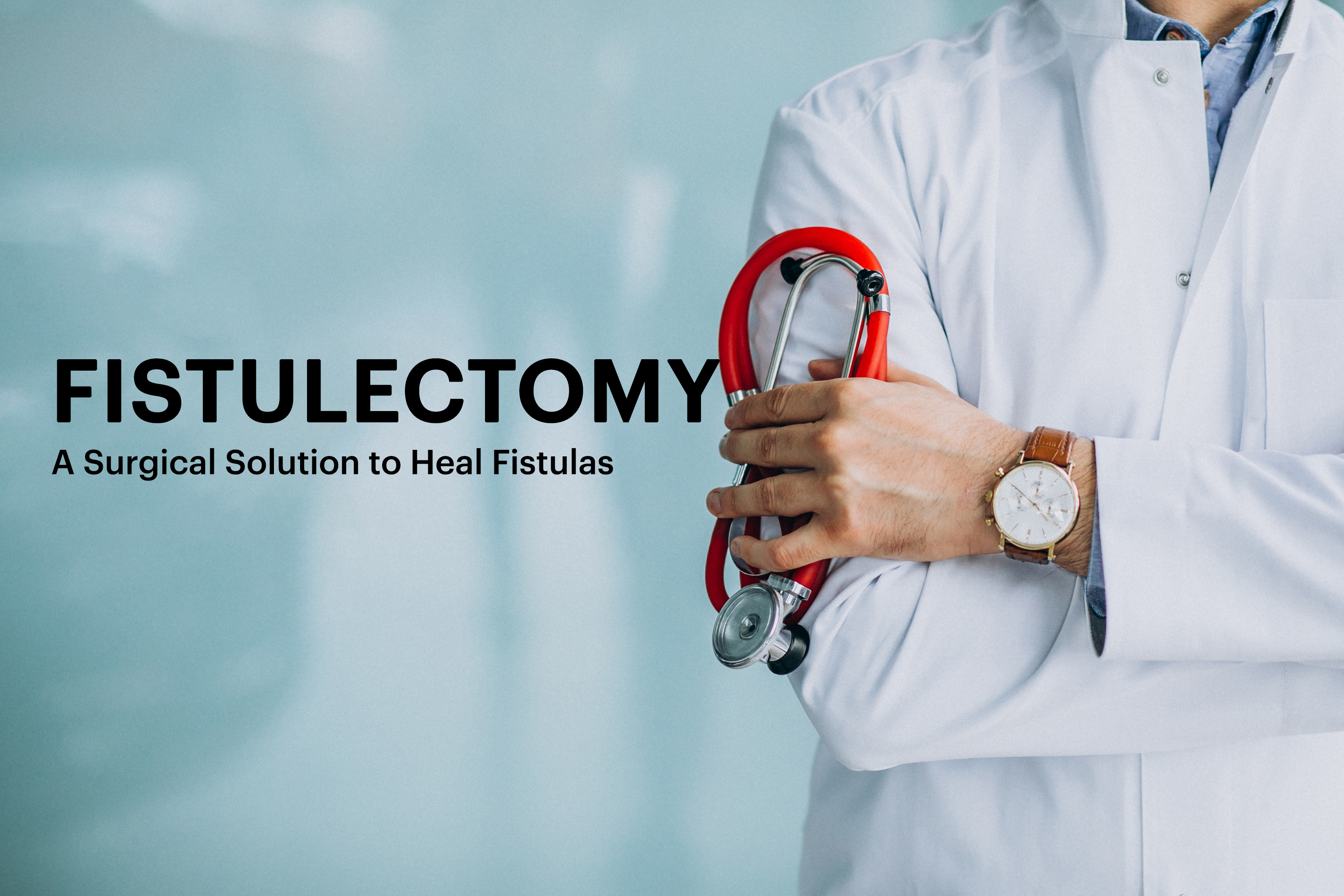

FISTULECTOMY: A SURGICAL SOLUTION TO HEAL ANAL FISTULAS

Introduction
Anal fistulas are a painful and uncomfortable condition that can greatly impact an individual's quality of life. While there are various treatment options available, one of the most effective and commonly used procedures is a fistulectomy. In this blog, we will explore what a fistulectomy is when it is recommended, how the procedure is performed, the recovery process, and the potential complications associated with this surgical intervention.
What is a Fistulectomy?
A fistulectomy is a surgical procedure used to treat anal fistulas. An anal fistula is an abnormal tunnel-like connection that forms between the anal canal and the skin near the anus. It often results from an anal abscess that has not fully healed. These fistulas can cause pain, discomfort, and recurrent infections, making them a cause for concern. A fistulectomy involves the removal of the fistula tract and the surrounding infected tissue, aiming to promote healing and alleviate symptoms.
When is a Fistulectomy Recommended?
A fistulectomy is typically recommended in the following situations:
Chronic or Recurrent Fistulas: When anal fistulas do not respond to non-surgical treatments or keep recurring, a fistulectomy is often considered.
Complicated Fistulas: Complex fistulas with multiple tracts or connections may require surgical intervention for complete removal.
Abscess Formation: If an anal abscess has developed alongside the fistula, surgical drainage, and fistulectomy may be necessary.
Severe Symptoms: When patients experience severe pain, persistent discharge, or difficulty with hygiene due to the fistula, surgery is usually the preferred option.
The Fistulectomy Procedure
A fistulectomy procedure involves several key steps:
1. Anesthesia: Before the procedure begins, the patient is given anesthesia, which can be general, regional, or local, to ensure they are pain-free during the operation.
2. Incision: The surgeon makes an incision around the fistula tract, allowing access to the tunnel-like structure.
3. Fistula Removal: The fistula tract, along with any infected tissue, is carefully excised.
4. Closure: The wound is closed with sutures, leaving the incision site to heal from the inside out.
5. Drainage: In some cases, a small drainage tube may be inserted to facilitate the removal of excess fluids and promote healing.
Recovery and Post-Operative Care
The recovery process following a fistulectomy involves several aspects:
1. Pain Management: Patients may experience pain and discomfort after the surgery. Over-the-counter or prescribed pain medications are provided to manage this discomfort.
2. Diet and Hygiene: Patients are usually advised to follow a soft diet and maintain good anal hygiene to prevent infection. Warm sitz baths may also be recommended to aid healing.
3. Physical Activity: Strenuous activities and heavy lifting should be avoided during the initial recovery period, allowing the surgical site to heal.
4. Follow-Up: Regular follow-up appointments with the surgeon are essential to monitor the healing process and address any concerns.
Complications and Risks
While fistulectomy is generally a safe and effective procedure, there are potential complications and risks associated with it. These may include:
1. Recurrence: There is a small risk of the fistula recurring, especially if the entire tract is not completely removed.
2. Infection: Infection at the surgical site is a possible complication, which can be managed with antibiotics.
3. Bleeding: Post-operative bleeding may occur, but it is typically minimal and self-limiting.
4. Pain and Discomfort: Pain and discomfort are common immediately after the surgery but should improve with time.
5. Fecal Incontinence: In rare cases, damage to the anal sphincter muscles during surgery can lead to fecal incontinence, or the inability to control bowel movements.
6. Delayed Healing: Slow wound healing or the development of a chronic wound is a potential risk.
Conclusion
Fistulectomy is a surgical procedure used to treat anal fistulas, providing relief to individuals suffering from this painful condition. It is typically recommended for chronic or recurrent fistulas, complex cases, or when patients experience severe symptoms. The procedure aims to completely remove the fistula tract and any infected tissue to promote healing and alleviate discomfort.
Recovery from a fistulectomy involves pain management, diet modifications, and careful hygiene. While complications and risks are possible, the procedure is generally safe and effective. If you suspect you have an anal fistula or are dealing with recurrent symptoms, consult with a healthcare professional to determine the most appropriate treatment plan, which may include a fistulectomy. Overall, fistulectomy offers hope for improved comfort and a better quality of life for individuals affected by this challenging condition.














